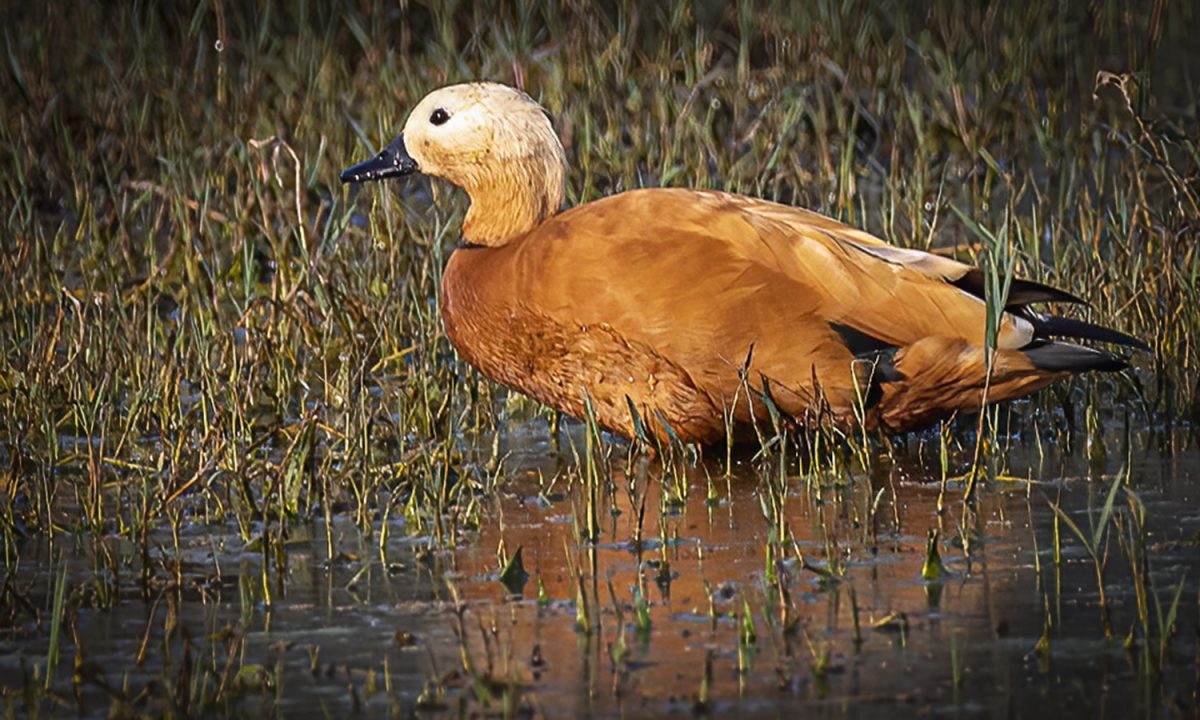At a time, when India is fighting Covid-19 on a war footing, an outbreak of bird flu – commonly known as avian influenza – has triggered panic across the country as hundreds of birds have died in Kerala, Rajasthan, Madhya Pradesh, Haryana, Odisha and Himachal Pradesh in the past week. The bird flu outbreak was reported just a few months after India had on September 30, 2020 declared the country free from the disease.
The disease spreads mainly through migratory birds coming into India during the winter months from September-October to February-March. The secondary spread by human handling (through fomites) cannot be ruled out. "Infection in humans is not yet reported in India though the disease is zoonotic. There is no direct evidence that AI viruses can be transmitted to humans via the consumption of contaminated poultry products," the government statement noted.
Even Union Minister for Animal Husbandry Giriraj Singh has blamed the migratory birds for the outbreak.
“So far, the disease has been confirmed from six states. It is learnt that culling operations have been completed in both the affected districts of Kerala. The disinfection process is underway,” the Centre said in a statement. The alert comes as India continues to battle Covid-19 and is about to start the most ambitious mass vaccination programmes ever taken in the world.
<img class="wp-image-59247 size-large" src="https://indianarrative.com/wp-content/uploads/2021/01/Rudy-shelduck-Pic-by-Mrityunjoy-Kumar-Jha-1024×614.jpg" alt="Rudy shelduck " width="1024" height="614" /> After coronavirus, could bird flu too have migrated from China? A rudy shelduck (Photo: Mrityunjoy Kumar Jha)According to the Himachal Pradesh government, more than 3,000 birds, mostly bar-headed geese, are dead from the disease.
According to experts, like 2005 even this time too, the source of the bird flu could be the Qinghai Lake in central China. In 2005, an unprecedented epizootic outbreak at Qinghai Lake killed more than 6,000 migratory birds including over 3,000 bar-headed geese. H5N1 subsequently spread to the Indian continent, Europe and Africa. In the following years, it re-emerged among wild birds along the Central Asia Flyway (CAF) several times as India remains in the core central region of CAF with crucial wintering population of water bird species.
Avian influenza is a disease caused by Type A viruses which are found naturally in wild aquatic birds and can infect domestic poultry as well as other bird and animal species. Though they don’t normally infect humans avian flu viruses have been reported from humans in the past. “It is a bird to bird virus. Wild and migratory birds have much immunity in comparison with native birds," says wildlife biologist, Dr Sumit Dookia. He adds: “Today most of the cases are being reported from places where migratory birds come, and they are the reason for bringing the virus in the country as they share the same habitat with resident birds.”
The current outbreak has evidence of H5N1 and H8N1 strains of virus causing death of birds. Bird flu outbreaks have taken place on multiple occasions in India since 2006 when it was first recorded in Gujarat and Maharashtra. At least 15 states have reported the cases of bird flu in India since then. However, there has been no recorded case of bird flu among humans in India so far.
<img class="wp-image-59271 size-large" src="https://indianarrative.com/wp-content/uploads/2021/01/Greylag-geese-by-Kamal-sahansi-1024×682.jpg" alt="Greylag geese " width="1024" height="682" /> Greylag geese (Photo: Kamal Sahansi)India is also a key breeding area for many other water birds such as pygmy cormorant and ruddy-shelduck, globally threatened water birds such as Dalmatian pelican, lesser white-fronted Goose, oriental white stork, greater adjutant stork, white winged woodduck etc. Bar-headed goose are the highest flying migratory birds and fly to India to escape the harsh winter in Siberia, China and Mongolia.
Migratory birds use flyways or specific migratory routes during their annual migration cycle. The CAF is one such route and one of the most crucial in the world with India being a winter home for 90% of bird species on this migratory route. According to government data, around 370 species of migratory birds from three flyways visit the Indian sub-continent.
The Convention on Migratory Species (CMS) Treaty, the only UN global convention specialising in the conservation of migratory species, their habitats and migration routes has 131 members including India and China. Beijing didn’t participate in the annual meeting (CAM COP13) held in India last year. Neither did Pakistan, which also is host to many migratory birds. Dr Dookia says: “As a COP party, all countries have a responsibility to share all information and try to control it together.”
Avian influenza has already hit 10 European countries — Netherlands, Germany, France, Belgium, United Kingdom, Denmark, Sweden, Poland, Croatia, and Ukraine in the last few weeks. Cases have also been reported in South Korea and Japan.
<img class="wp-image-59279 size-full" src="https://indianarrative.com/wp-content/uploads/2021/01/Eurasian-Spoonbill-Pic-by-mrityunjoy-Kumar-Jha.jpg" alt="Eurasian Spoonbill_Mrityunjoy Kumar Jha" width="666" height="1000" /> Eurasian Spoonbill (Photo: Mrityunjoy Kumar Jha)With all these news reports about bird flu coming from various parts of India, I was pondering if it was safe to visit the Sultanpur wetlands. My heart wanted to click pictures of our winter visitors – migratory birds who throng the wetlands of Sultanpur, near Gurugram. In Sultanpur wetland, we noticed that flocks of migratory birds are thriving. Greylag geese, whistling ducks, Northern pintails and many other species including my favourite bar-headed geese. Oblivious of the news that thousands of their fellow species are dead in Pong Dam lake in Himachal Pradesh, these migratory birds were having a great time in Sultanpur.
Officials in Gurugram told the media that there is no sign of the outbreak in the district and they are monitoring poultry farms, wetlands and the bird sanctuary.
Sultanpur wetland has been put on high alert and the Haryana administration has asked officials and villagers to inform the Wildlife Department about the death of any migratory bird. In Sultanpur and also in Nazafgarh wetland, hundreds of birds of more than 50 species like northern pintail, common teal, red lapwing, shoveler duck have landed for breeding. Ibis, night heron, painted storks, grey headed swamphen, jungle fowls, coot, cormorants, spot billed ducks are some of the local winter visitors.
Experts say bird flu will come back every season, every year. Apart from poultry and wild bird trade, another factor involved is the untracked release of birds. Birds are caught at one place, transported to another and released in completely unknown and new areas. Such activity is perfect for the spread of the disease and not much is known about it.
Experts say that avian flu viruses do not normally infect humans. Though the transfer is rare, it has been reported in many countries except India. There is however no need to panic as long as everyone follows basic hygiene and cooking etiquette.
<img class="wp-image-59289 size-full" src="https://indianarrative.com/wp-content/uploads/2021/01/Knob-Bill-Duck_Mrityunjoy-Kumar-Jha.jpg" alt="Knob Bill Duck_Mrityunjoy Kumar Jha" width="1000" height="761" /> Knob Bill Duck is a resident bird (Photo: Mrityunjoy Kumar Jha).




















